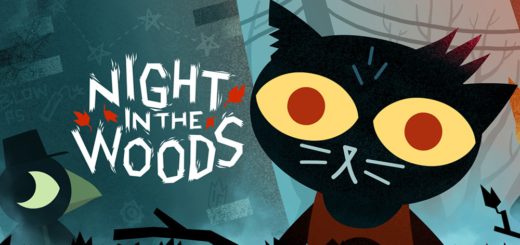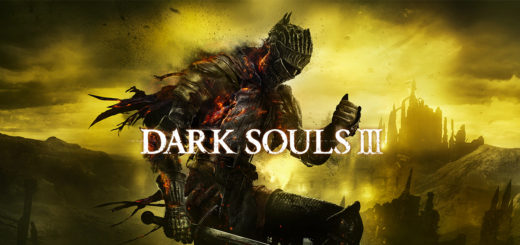ZERO TIME DILEMMA Review
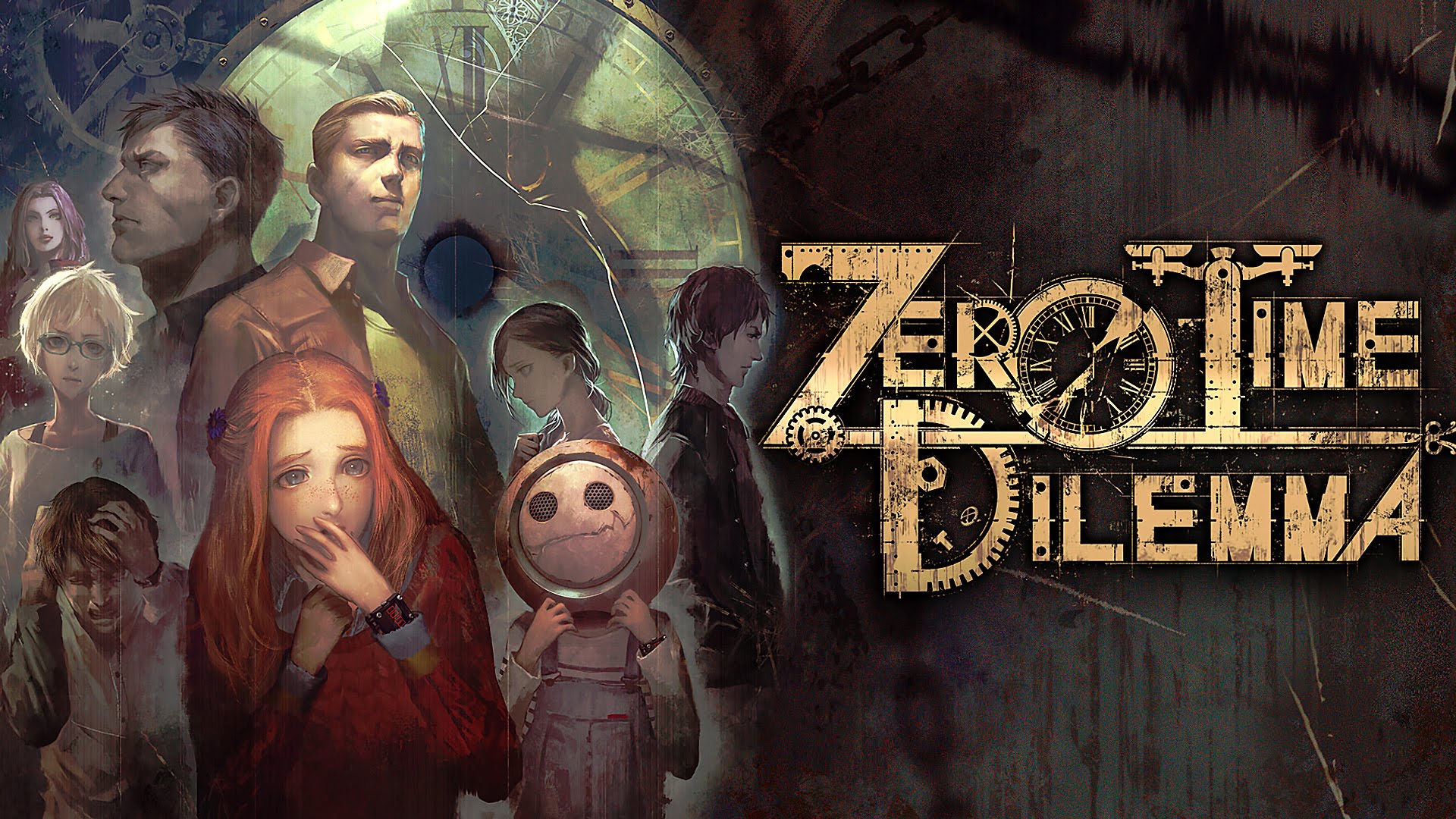
Nine people are locked in a bunker, split into three teams. Each trio is separated from the others and forced to participate in “decision games” that involve twisted traps and torture devices. Every 90 minutes, a bracelet on each prisoner’s wrist injects them with a cocktail that renders them unconscious and erases their memories of the past hour and a half. This process repeats itself until six of them lie dead, and only then will the survivors be permitted to leave.
Hell, if that isn’t a great game premise, then I don’t know what is. ZERO TIME DILEMMA is the third and final entry in the acclaimed Zero Escape franchise, and I’ll admit right now that it is the only title in the series that I have played. It’s no coincidence that ZERO TIME DILEMMA marks the first time the devs tried targeting a Western, rather than strictly Japanese, audience. Despite the glowing reviews of the first two games, I’m not really a fan of visual novels, which is why ZTD’s fully voiced cutscenes finally won me over. And even though jumping headfirst into the end of a series is generally a bad idea, ZTD’s one-of-a-kind presentation makes the game equally refreshing for newcomers and series veterans alike.
Yes, four of the nine members of the cast are from previous Zero Escapes, and ZTD is a sort of midquel set between the other two, but this shouldn’t deter neophytes. The three playable characters are new to all of this themselves, and their friends waste no time catching them, and the player, up to speed. While experiencing the previous two entries is sure to enhance and enrich the experience, ZTD is nonetheless an extremely enjoyable standalone experience.
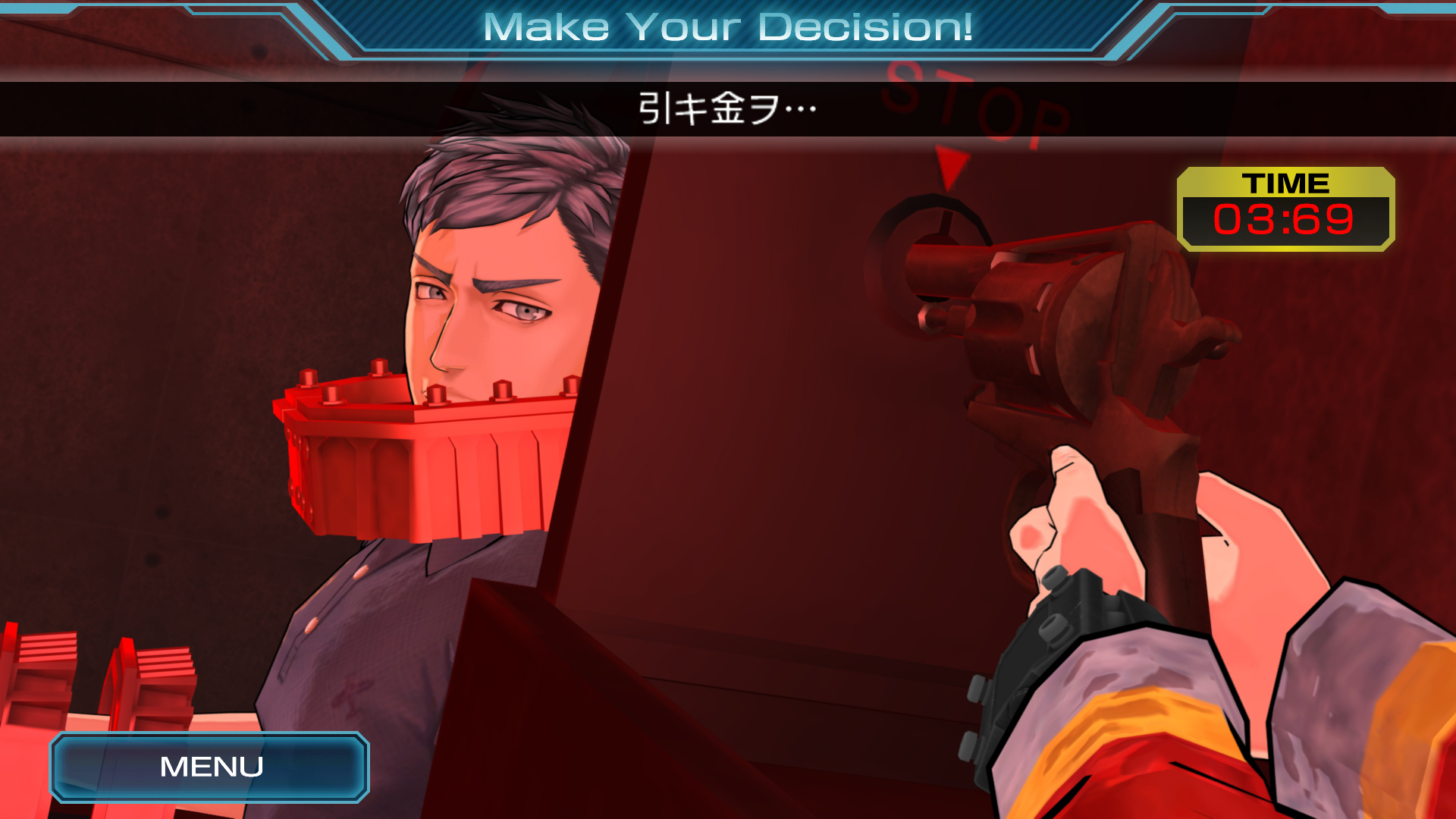
Trust me!
But enough with the qualifications, it’s time to talk about the actual game! ZTD is divided into two sections: puzzles and decisions. Upon waking up in a (usually) locked room, the prisoners need to find a way to escape before 90 minutes pass. These segments play out like your typical first person point-and-click, utilizing a mix of item collection, environment interaction, and a combination of the two. Though some are harder than others, all are veritable brain busters to rival even THE WITNESS. Like that game, many challenges feature codebreaking, but there are logic problems of all varieties lurking within as well. Completion of a puzzle room can sometimes take up to an hour, but the ensuing endorphin rush makes it all worth it.
After each puzzle, the characters are then faced with an appropriate dilemma. Sometimes it’s a deadly game that’s necessary to complete in order to leave the room. Other times, tensions within the group will cause teammates to attack each other. Whatever the situation, the player will then have to make a pick between a variety of really awful choices to resolve the conflict, often ending with one of their number dead. An element of chance is thrown into the equation when you consider that outcomes are often randomized. For example, the house-ruled game of Russian roulette pictured above features a revolver loaded with three bullets and three blanks. If the player chooses to pull the trigger, there is no guarantee what will fire out the other end. This uncertainty creates moments of dread that evoke THE WALKING DEAD or UNTIL DAWN, but with a diabolical morbidity that even those games don’t achieve.
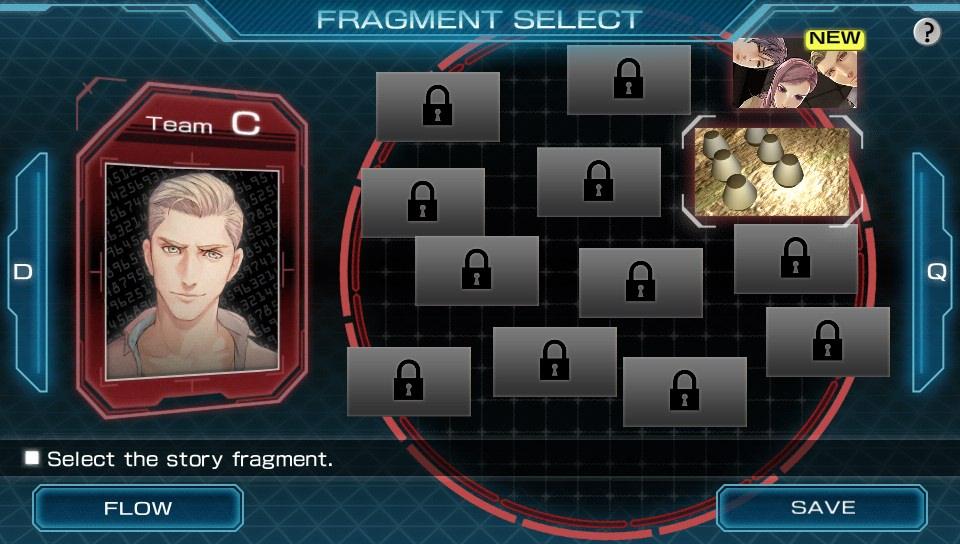
Me trying to remember why I got thrown out of Adam Sandler’s standup: The Game
In fact, while many will draw comparisons between ZTD and UNTIL DAWN, what with their horror movie influences and lineups of ultra trendy millennials getting brutally slaughtered, they couldn’t be further apart. UNTIL DAWN emulates a slasher film in all aspects, playing out linearly, and creating one of the most cinematic experiences in gaming. ZTD is the antithesis of this, telling a story that could only work in a video game.
Because of the aforementioned mind-erasing drug, each story scene begins with our amnesiac prisoners trying to piece together what has happened to them. Sometimes a member of their group is missing, or a critical aspect of their surroundings has been changed, and no one will remember why. It is left to the player, who can play any of the three team’s scenes in any order, to piece together the puzzle of what happened to everybody and when exactly they are in the story.
Things get even more complicated when you factor in the branching timelines that spawn from conflicting decisions. In a twist that is more LIFE IS STRANGE than UNTIL DAWN, ZTD allows you to revisit any memory fragment for a different result. While the ability to replay scenes until you get the optimal solution would appear to remove any tension from the game, that would be misinterpreting ZTD’s purpose. This is a game where every outcome, both good and bad, must be reached to reveal the full picture. Only after gathering these clues across all possibilities will the player, and in a self-aware twist, the characters themselves, realize the key to their freedom.
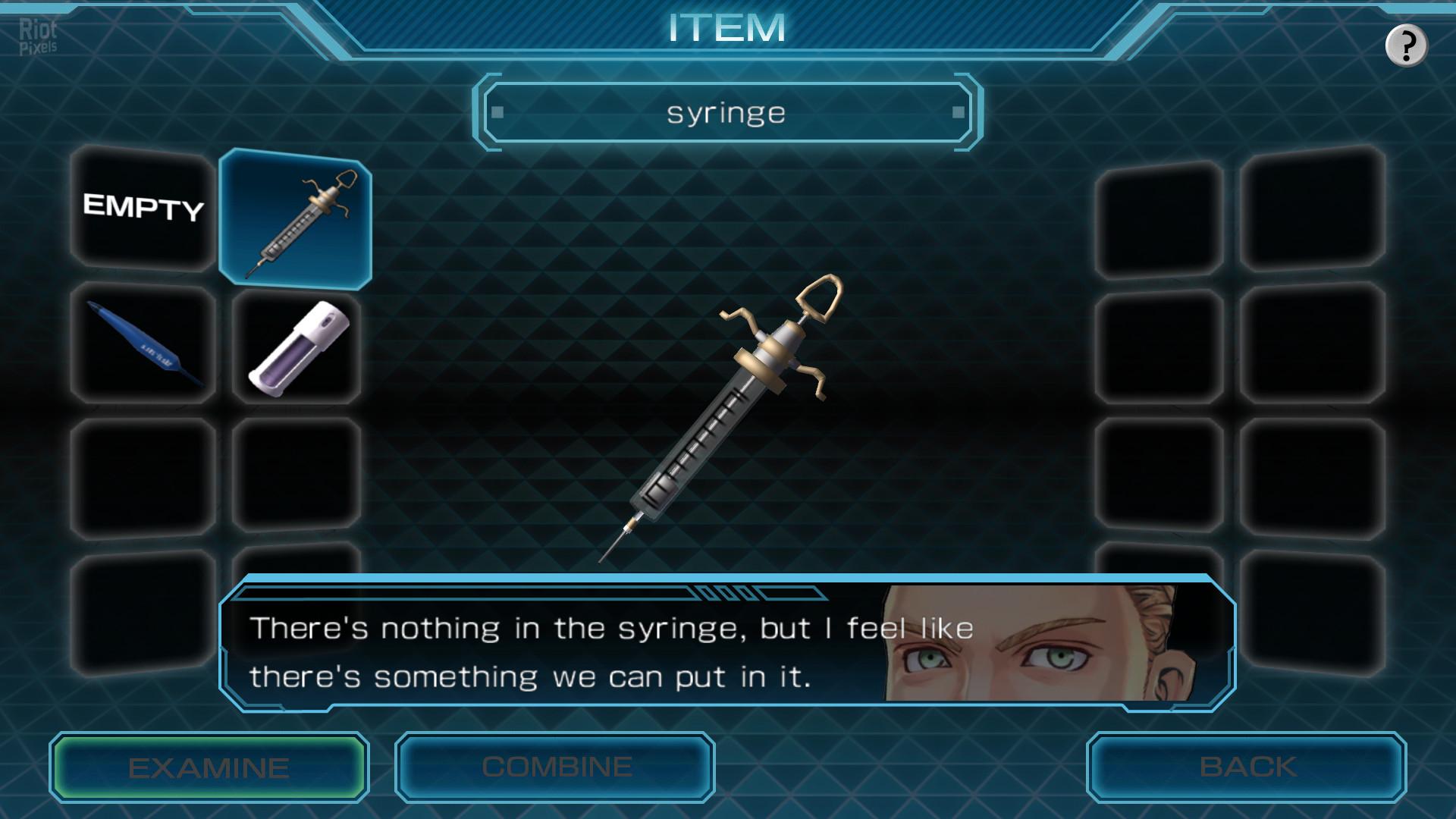
It’s this kind of thinking that gets people into trouble
It’s a concept that shouldn’t work, but does in a truly spectacular fashion. It doesn’t hurt that the writing here is top-notch, either. Save for one character who feels out of place, each of the cast members is wonderfully realized thanks to multifaceted arcs, a stellar script, and clever dialogue. ZTD knows that its premise is crazy, and even its subjects do to some extent. This is a game where several characters debate the science of BACK TO THE FUTURE for over six minutes, only they use initials and acronyms to circumvent those pesky copyright laws. It’s so shameless and so cheeky, that even when the more bizarre twists arrive late game, the player is already conditioned to take them in stride.
Any of ZTD’s shortcomings lie squarely in its aesthetic. Again, much unlike UNTIL DAWN, ZTD is a decidedly budget production, opting for anime-styled visuals to compensate for its graphical limitations. Even so, there is little that can be done about the stiff character animations, which hurt the most during facial shots. Lip-sync doesn’t match either the Japanese or English audio tracks, which (bringing us back to LIFE IS STRANGE) is absolutely critical in such a dialogue-heavy release. These issues are compounded on the 3DS version of the game, whose limited hardware wreaks havoc on textures and causes the frame rate to dip dangerously low during scenes with more than three characters, or those featuring particles effects like smoke and water.
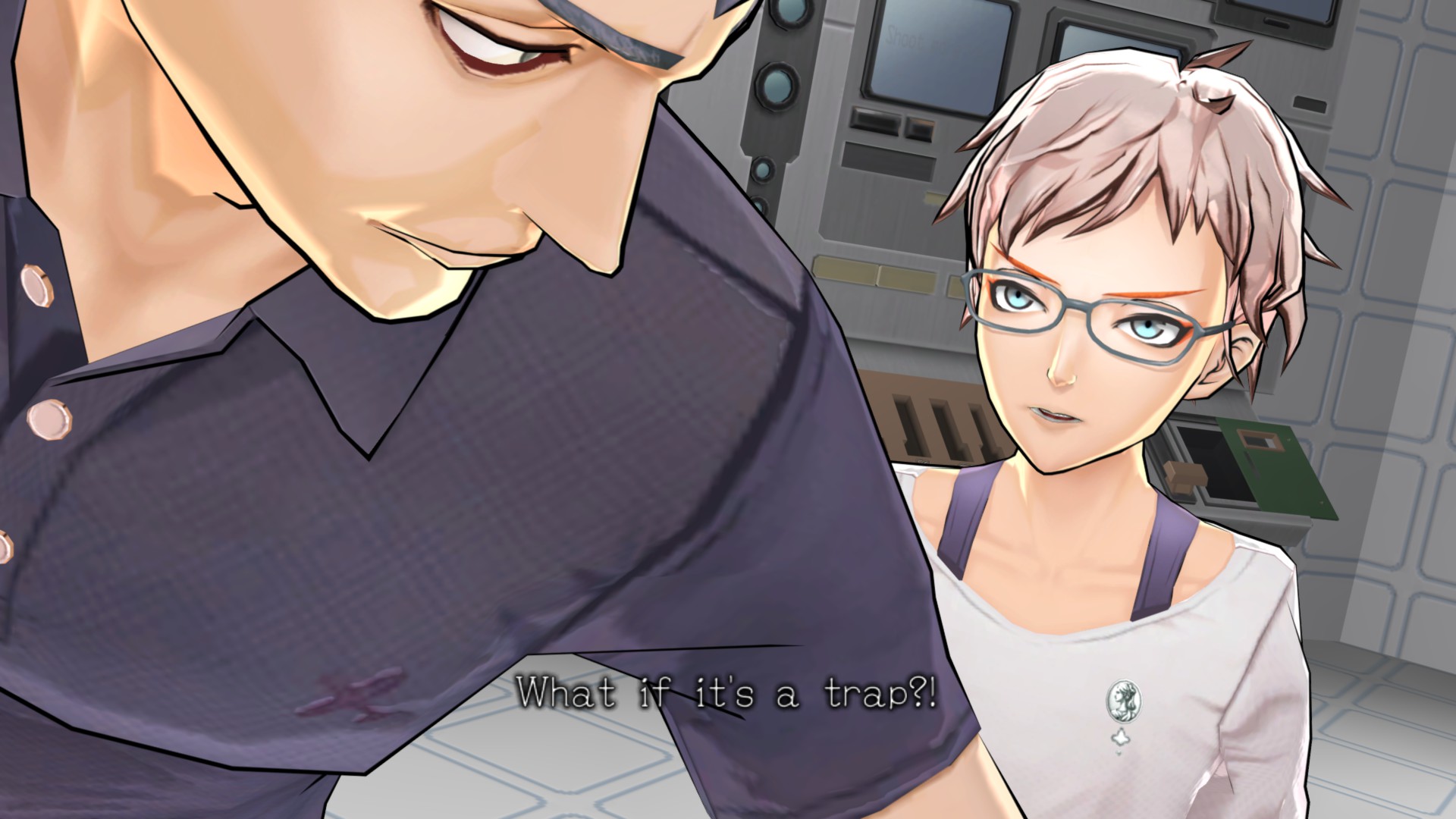
Common concerns
So ZERO TIME DILEMMA isn’t a looker. That’s fine. Neither was Babe Ruth, and yet both knock it way out of the park. I’m not going to pretend that ZERO TIME DILEMMA isn’t a niche title, but during such a drought of strong interactive narratives, this is a game that stands tall among the greats of video game storytelling. If you’ve got 20 hours that you’re doing nothing else with, ZERO TIME DILEMMA offers one of the most fascinating blends of genres, mediums, and cultures that media has produced, and that is anything but hype.
Verdict: Recommend
Reviewed on 3DS, also available on PC and Vita.

